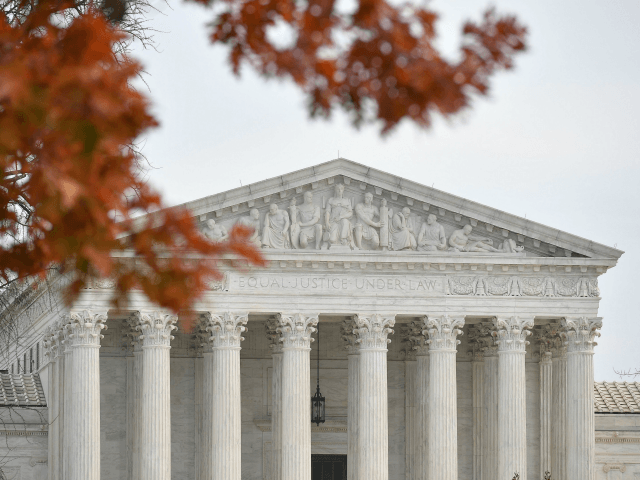WASHINGTON, DC – The Supreme Court weighed in on redistricting fights in crucial 2020 presidential swing states, blocking four lower-court decisions on Friday, as the justices prepare to decide how much unelected judges can intervene regarding politicians’ drawing legislative district lines.
The Fourteenth Amendment and Fifteenth Amendment to the Constitution empowers Congress to make laws to stop racial discrimination by state governments, especially regarding voting and elections. One of these laws is the Voting Rights Act of 1965, wherein Section 2 forbids drawing legislative districts that reduce the voting power of racial minorities.
But for decades, activists on the left have argued that the Constitution also forbids “partisan gerrymanders.” Per the Constitution, after each decade’s nationwide census, legislative districts for both Congress and statehouses in every state are almost all drawn by the state legislature. A “partisan gerrymander” is a liberal legal creation in which those politicians allow “too much politics” to influence how they draw those lines when attempting to protect their parties’ power in each state.
The Supreme Court has been split on the issue for decades. But with Justice Brett Kavanaugh’s replacing swing-vote Justice Anthony Kennedy, legal conservatives are hopeful that they might have a majority to finally get a clear ruling acknowledging the common-sense idea that there is no neutral legal basis upon which judges can make politicians give up politics when making an inherently political calculation – which is what redistricting is.
The Court heard arguments this April in two such cases: Rucho v. Common Cause, and Lamone v. Benisek. A decision is expected in June, and could resolve this issue. Typical procedure for lower courts in such a situation is to put pending cases on hold until the Supreme Court issues new guidance through these imminent rulings.
That did not stop judges in four cases in the key presidential swing states of Ohio and Michigan. Under federal law, challenges to legislative districting plans are decided by a three-judge trial panel comprised of one federal appeals judge and two federal district judges, all from the jurisdiction where the challenge occurs. In the very rare instances where federal law requires a case to be decided by such a three-judge trial court, the loser has an automatic right of immediate appeal to the Supreme Court.
The four cases at issue here all went to liberal-majority panels, both led by reliably liberal appellate judges from the U.S. Court of Appeals for the Sixth Circuit: Judge Karen Moore – the Ruth Bader Ginsburg of that court – and Judge Eric Clay.
In four separate short, one-page orders, the Supreme Court issued a stay blocking the decision in all four cases. That keeps the districting lines drawn by Republican-majority legislatures in both states in place until the justices hand down their opinions in Rucho and Lamone. At that time, the cases will likely be remanded to the lower court for new decisions in light of the new Supreme Court precedent.
The cases are Householder v. A. Philip Randolph Institute, No. 18A1165, Chabot v. A. Philip Randolph Institute, No. 18A1165, Michigan Senate v. League of Women Voters, No. 18A1170, and Chatfield v. League of Women Voters, No. 18A1171, in the Supreme Court of the United States.
Ken Klukowski is senior legal analyst for Breitbart News. Follow him on Twitter @kenklukowski.

COMMENTS
Please let us know if you're having issues with commenting.